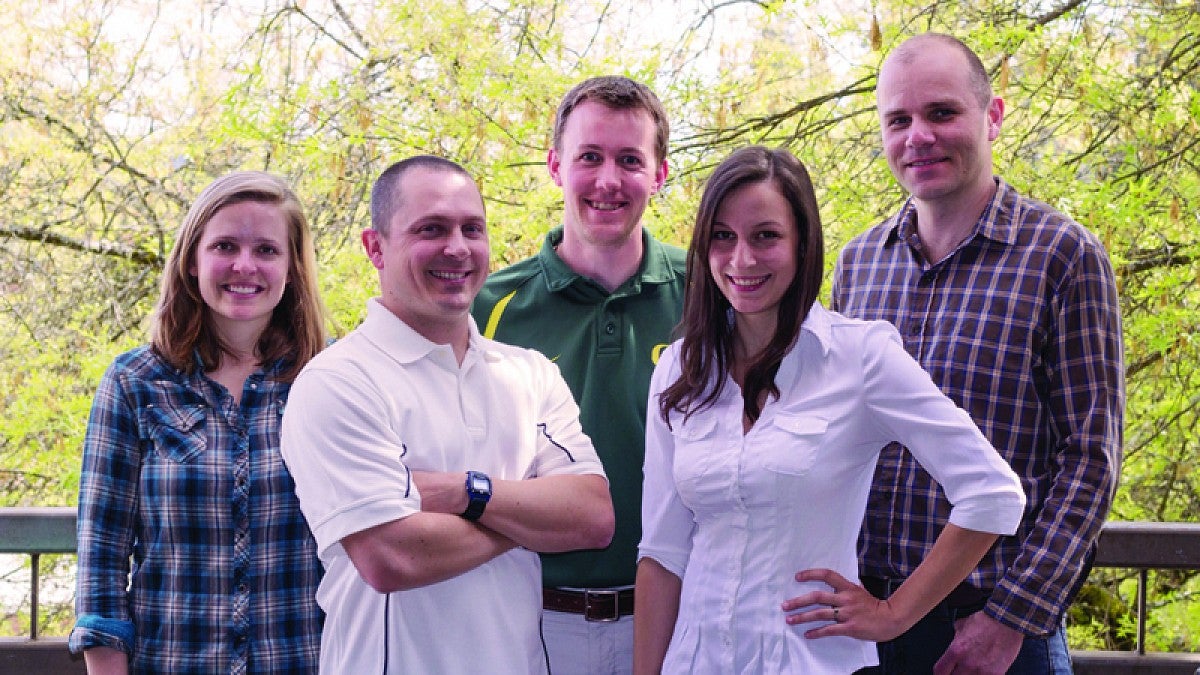A team of UO landscape architecture students has won additional startup funding for a water filtration prototype, this time $2,500 in the statewide Portland State University Cleantech Challenge, and a chance at winning another $10,000 in September.
Earlier, the team won $10,000 in a global competition and the chance to compete for a $100,000 prize to be awarded in October. In a further show of team unity and largesse, one team member plans to use a separate, individual $15,000 scholarship stipend to further her team’s research.
Their project, “Penthouse Protozoa: The Living Filtration System,” is designed to trap excess fertilizer in agricultural fields where it’s gradually absorbed by plants rather than leaving fields as polluted runoff. The team includes Wade Hanson, Casey Howard, Matt Jorgensen, Alison Lewis and Krisztian Megyeri.
The students began their project in a spring 2015 class taught by UO Instructors Anne Godfrey and Emma Froh.
The PSU Cleantech Challenge, hosted by Portland State University, selected 10 student teams from universities around Oregon to each receive $2,500 to develop prototypes of environmentally friendly inventions and compete for a grand prize of $10,000 to help bring their innovations to market.
Each finalist team in the Cleantech Challenge has also been matched with a business development mentor and provided work space to refine their ideas and product for the final competition, which is at Oregon BEST FEST 2016 at Portland's World Trade Center in September.
This is the first year the PSU Cleantech Challenge opened to schools statewide.
Howard, the sole undergraduate on the team, was awarded the 2016 National Olmsted Scholar Award and is using its $15,000 stipend to further her team’s research.
Last fall, the UO team won the $10,000 first-place prize and advancement to the final round of the Biomimicry Global Design Challenge, which asked participants to tackle any aspect of the food system that could be improved by looking to nature for design guidance. The final competition takes place in October in San Rafael, California, where teams will compete for the $100,000 Ray of Hope prize.
—By Marti Gerdes, School of Architecture and Allied Arts


